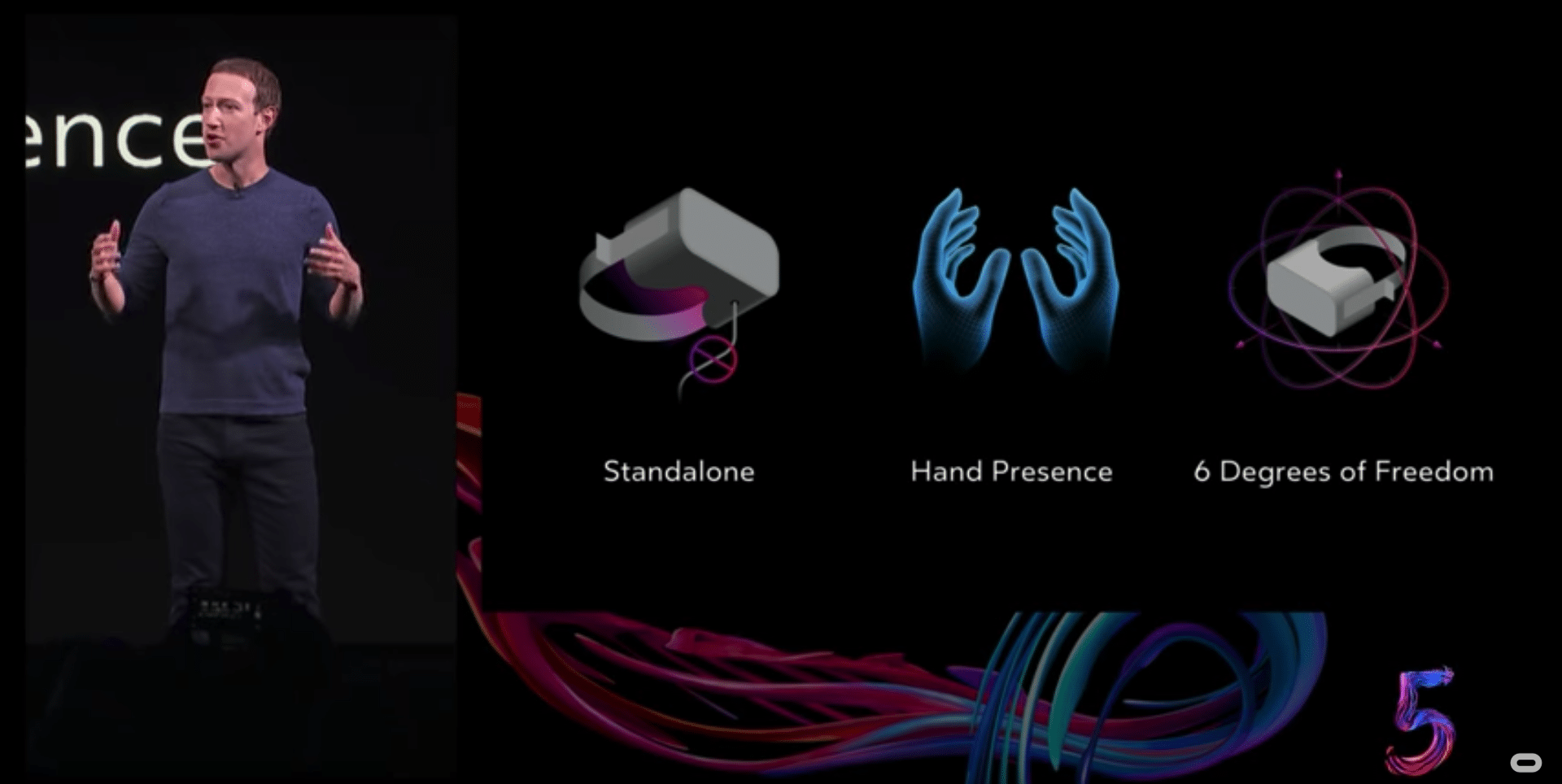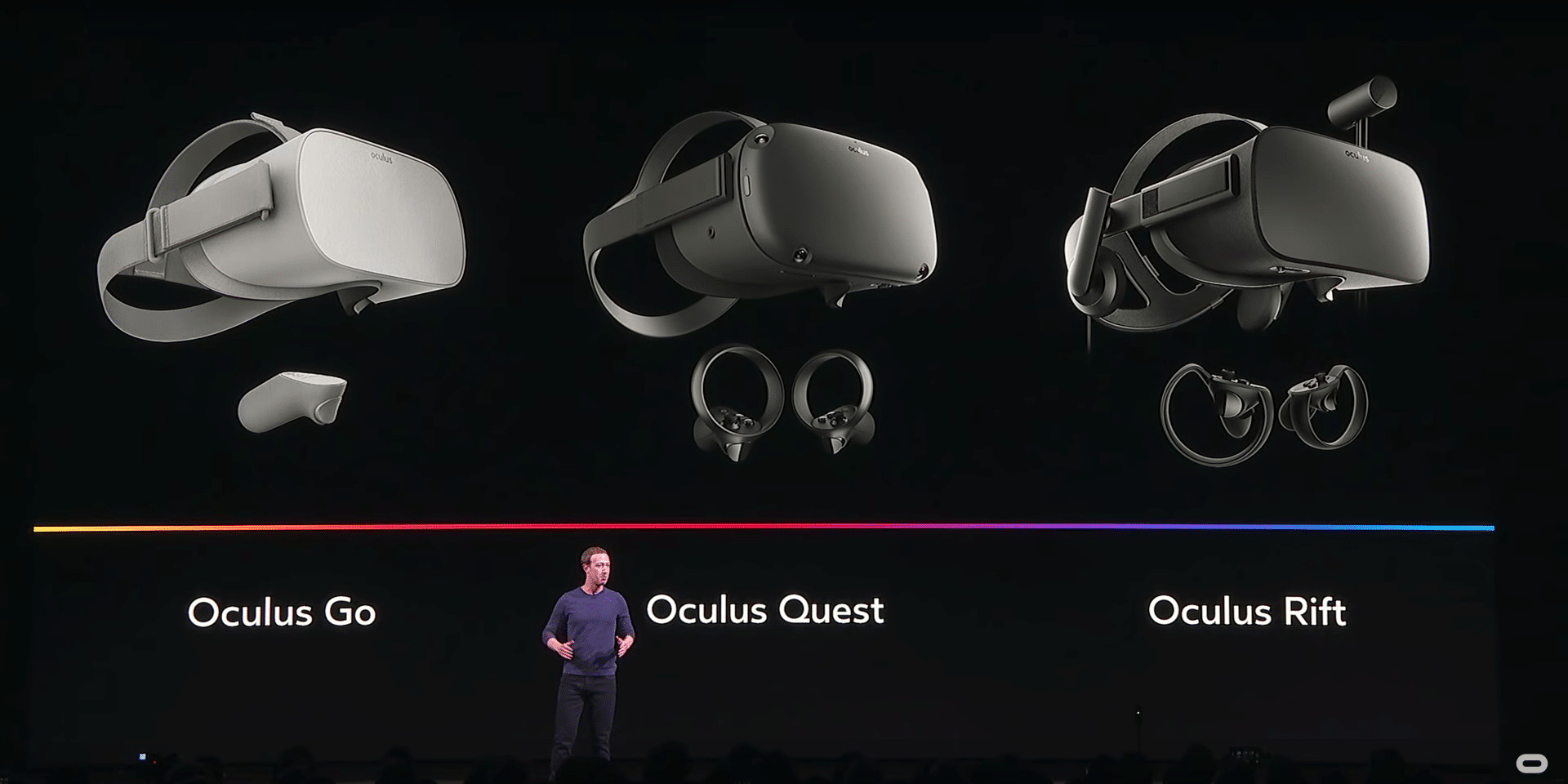
XR Talks is a weekly series that features the best presentations and educational videos from the XR universe. It includes embedded video, as well as narrative analysis and top takeaways. Speakers’ opinions are their own.
VR is a moving target. After 2016’s hype cycle, the market continues self-correct. So projecting growth is a constant process of monitoring the dance between innovation, product cycles and consumer adoption. This was an underlying theme at Facebook’s OC5 keynote this week.
Amidst rolling out products like Oculus Quest, smartphone support and a YouTube VR app, Mark Zuckerberg took the chance to recalibrate VR’s timeline. After previously stating the lofty goal of 1 billion people in VR, he admits we’re less than one percent of the way, but we’ll get there.
“For me, this isn’t a question of whether we’re gonna get there, it’s how or what is the exact roadmap,” Zuckerberg said from the stage. “What are the exact next steps we need to take on the path there? And now I think that we all need to focus on solving two important problems.”

Those two problems are ecosystem and form factor. For the first, it goes back to the chicken and egg dilemma. There needs to be a hardware installed base large enough to incentivize developers to invest in creating content — which Facebook has jumpstarted through content investment.
“We think we need about 10 million people on a given platform,” he said. “That’s the threshold where the number of people using and buying VR content makes it sustainable and profitable for all kinds of developers…then we think the content and the ecosystem are just going to explode.”
Regarding form factor, it’s a delicate dance because hardware decisions have ripple effects on subsequent evolution in terms of maintaining forward compatibility. There’s already enough fragmentation, per the above, for Oculus to further fragment its own product generations.
“For building products, they’re going to run similar content across generations,” he said. “That means we need to lock in certain key decisions now like what the input is going to be, so [it] can be consistent over time. So we need to ask what are the key attributes of the ideal VR system.”

Furthermore, with form factor, there are strategies that Facebook/Oculus continues to learn through testing and user feedback. It’s now convinced that the way forward for mass-marketable hardware is standalone/untethered form factor, hand presence and full (6DOF) positional tracking.
“If we can bring these three qualities together in one product, we think that’s the foundation for the ideal form factor for VR,” he said, leading right into the main announcement: Oculus Quest. As you’ve likely read, this is the newest headset with all of the above specs and a $399 price tag.
The price is logical. At $200 more than Oculus Go, there’s a big enough delta to avoid cannibalization, but strong enough value in feature upgrades. Those include most notably 6DOF inside-out tracking for headset and hand controllers, which unlocks Rift-like gaming capability.

And like Oculus Go, the price is strategically set at margin-neutral, or a loss-leader approach to seed a market and longer-term platform play. But the question remains if it’s low enough to hit the mass-market “magic price” of $200. Then again, it’s likely not yet meant to reach that scale.
Panning back to the full product line, there’s economic optimization around three tiers — Go, Quest & Rift — to capture demand across market segments. Also materializing is VR’s timeline to maturity, which keeps getting pushed back, though confidence persists in Menlo Park.
“From here, we’re going to make some big leaps in both tech and content for the future generations of each of these products,” said Zuckerberg. “It’s still early but this is the basic roadmap. This is what we need to do for VR to succeed, and to get to the future that we all want.”
See Zuckerberg’s segment of the OC5 keynote below. Stay tuned for part 2 of this series that examines VR’s progress/timeline from Oculus Chief Scientist Michael Abrash.
https://youtu.be/xXtk9cm2X1k
For deeper XR data and intelligence, join ARtillry PRO and subscribe to the free ARtillry Weekly newsletter.
Disclosure: ARtillry has no financial stake in the companies mentioned in this post, nor received payment for its production. Disclosure and ethics policy can be seen here.
Header image credit: Facebook
